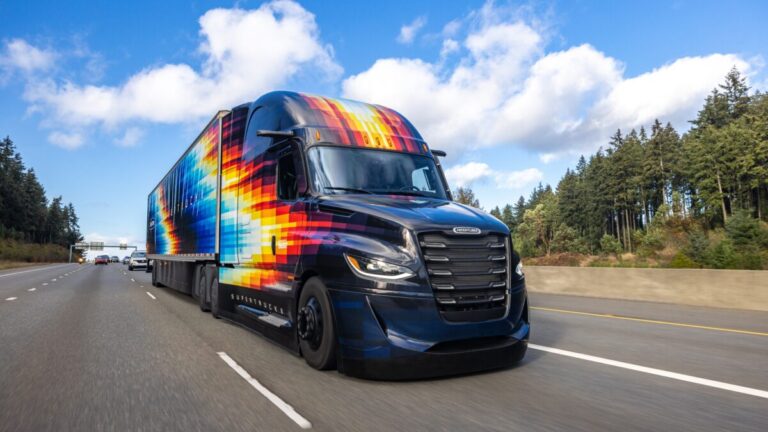
LAS VEGAS — For the $20 million it spent on the Freightliner Cascadia SuperTruck II program, Daimler Truck North America expects some of the advanced technology to find its way into production.
That’s what happened after SuperTruck I, an $80 million split between DTNA and the Department of Energy that ran between 2010 and 2015. The DOE matched DTNA’s $20 million for SuperTruck II.
The investment from the first SuperTruck program paid off. Current generation Freightliner Cascadias have a windshield that debuted on SuperTruck I. Fuel-saving aerodynamic features from the project showed up as options on the New Cascadia that debuted as a 2020 model.
“We want to focus on those things that stand the best chance for production,” said Derek Rotz, DTNA advanced engineering director who worked on SuperTruck I and led the SuperTruck II program. “With SuperTruck II, we’ve built on those learnings. We didn’t need to start off with a clean sheet and investigate every last corner of the vehicle.”
Even as the results of SuperTruck II were unveiled at the Manifest supply chain conference, DTNA is already working on a SuperTruck III program to develop a hydrogen-powered fuel cell electric tractor for long-haul trucking that retains maximum cargo capacity.
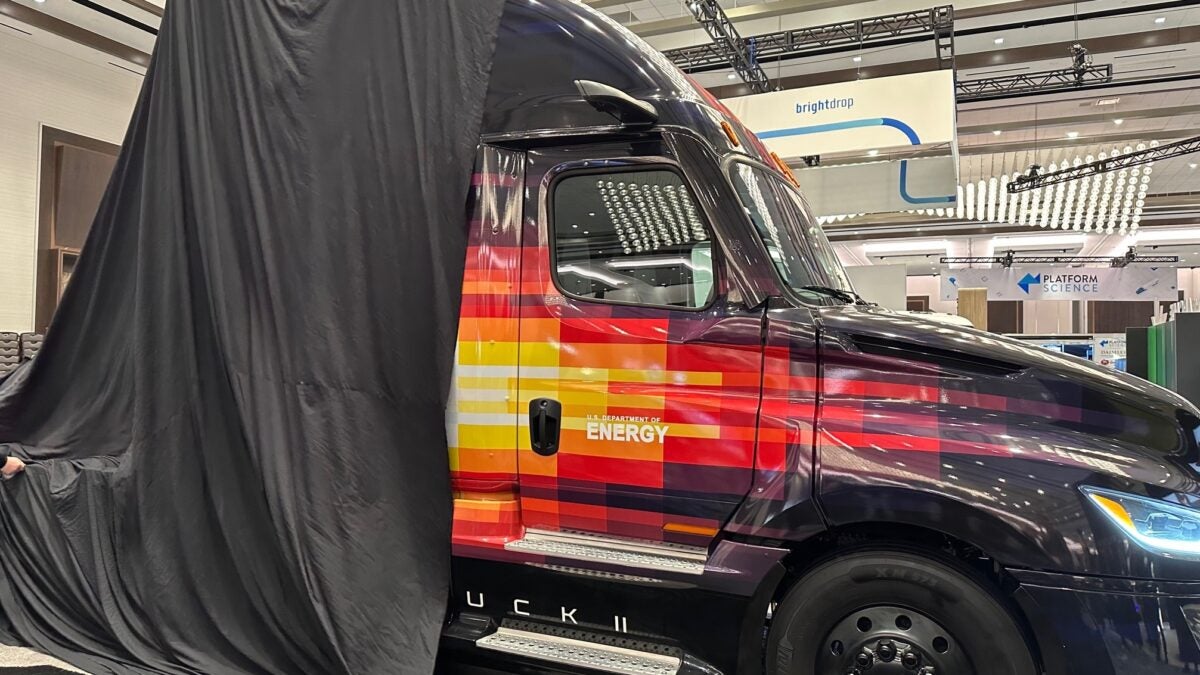
SuperTruck III results are planned for reveal in 2027, around the time Daimler Truck and Volvo Group expect to introduce production fuel cell trucks from their cellcentric joint venture.
4 focus areas in SuperTruck II
For SuperTruck II, designers and engineers tried to stay close to the architecture of the present-day Cascadia in choosing what to leave in and what to leave out. Four areas received attention: enhanced tractor aerodynamics, powertrain improvements, energy management and low-rolling resistance tires.
Each set benchmarks for freight efficiency and a reduced carbon footprint, overall goals of the SuperTruck program.
“All these technologies together drove us to more than double our freight efficiency on a tractor that doesn’t look radically different but performs better,” said Derek Villeneuve, manager of advanced vehicle systems.
It’s not a drag
The aerodynamic drag — a measure of how it slips through air currents — came in 12% better than SuperTruck I. Engineers didn’t calculate the number against the current production truck because it would not be an apples-to-apples comparison, Rotz said.
The redesigned hood, bumper and chassis fairing all complement the existing cab structure pushing undisturbed airflow around the truck. The grille, air intakes and doors were redesigned to be as seamless and clean as possible.
At highway speeds, the tractor and trailer automatically lower a couple of inches. When the rig slows, the tractor raises back up.
DTNA-developed side extenders and a roof spoiler also activate automatically at highway speeds to close the gap between the tractor and trailer to within four inches. They resemble aftermarket extenders from Truck Labs, but Villeneue said DTNA had been working on its own version.
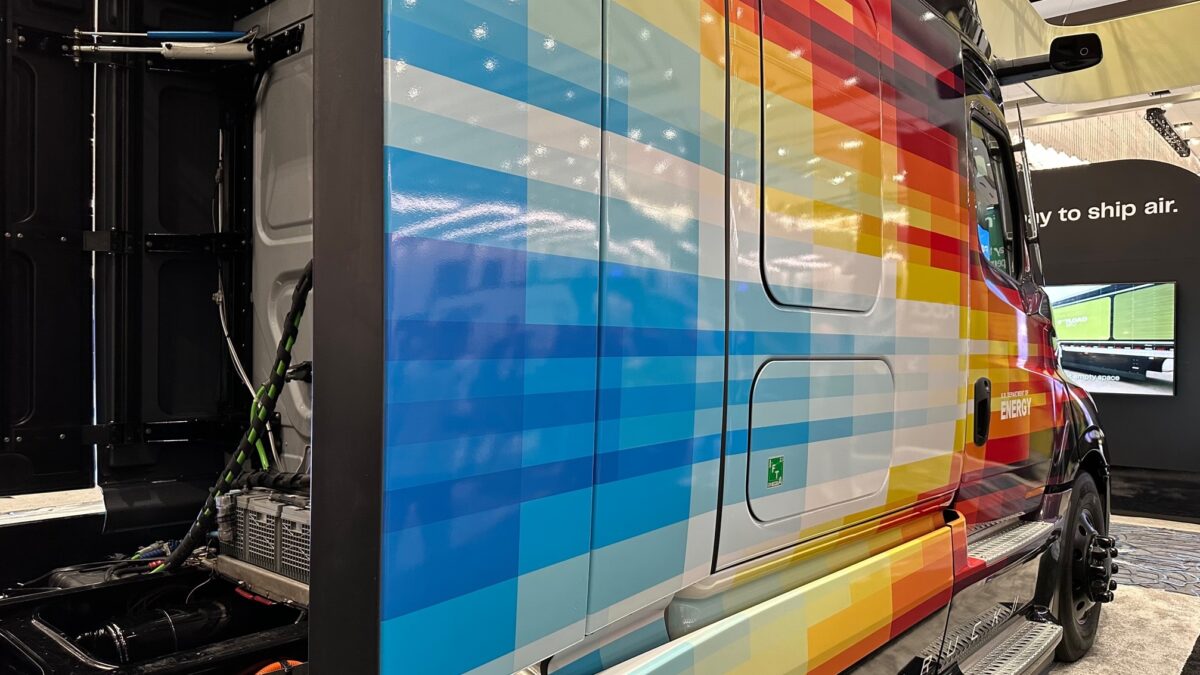
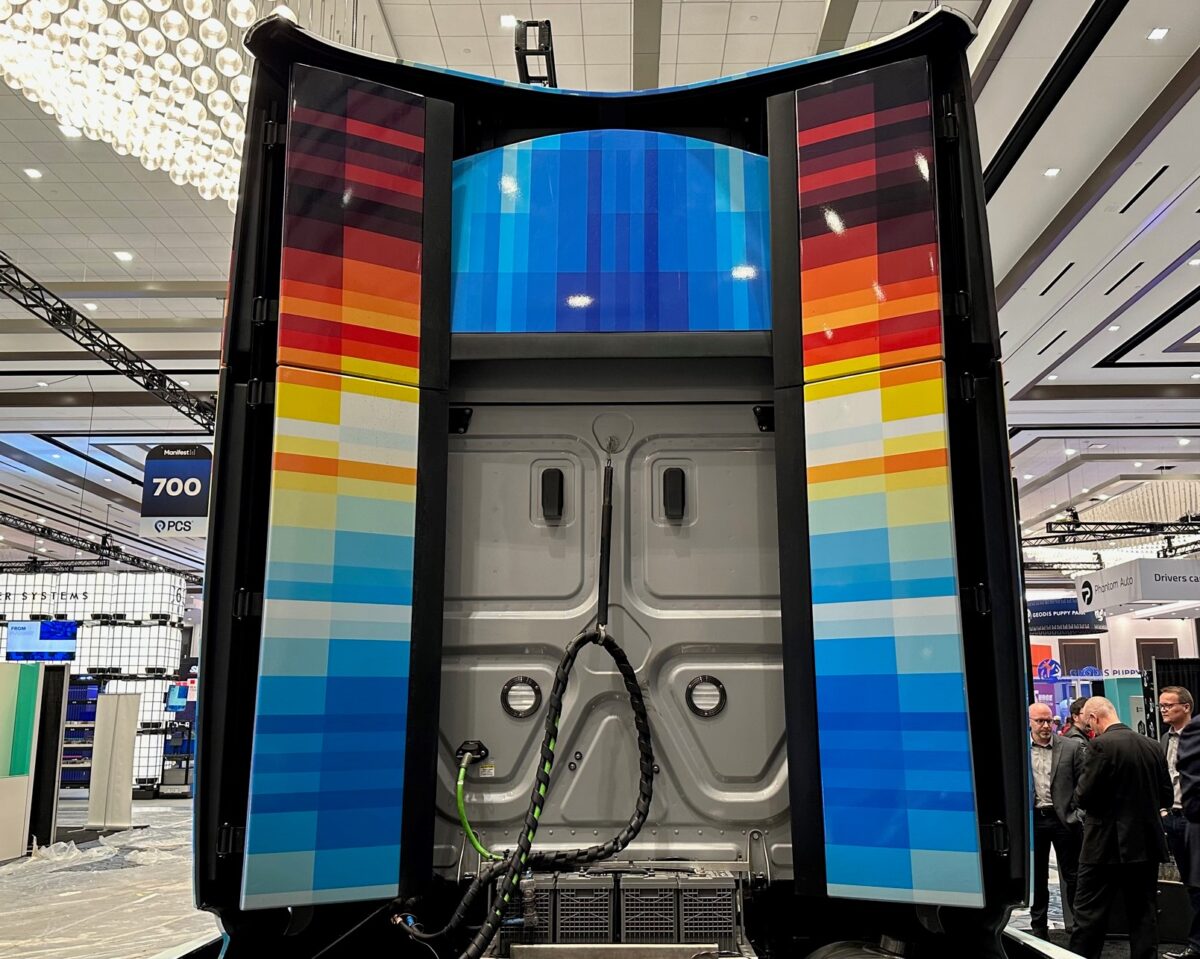
Bulky side mirrors were replaced by the Stoneridge mirror camera system. Federal regulations prohibit factory installation of the system today, but they are getting closer. DTNA already pre-wires production Cascadias to ease their addition in the aftermarket, which regulators allow.
Engine efficiency
DTNA claims SuperTruck II features the most efficient powertrain Freightliner has integrated into a truck. SuperTruck II consumes 5.7% less fuel than SuperTruck I. A prototype Detroit 13-liter engine features two-stage turbo and interstage cooling paired with a 13-speed overdrive transmission.
SuperTruck II features a split cooling system that consists of high-temperature and low-temperature cooling circuits working in tandem with two-stage turbocharging and exhaust gas recirculation cooling on the engine. Navistar introduced a similar system on the integrated S13 powertrain offered in the International LT starting production later this year.
A key benefit is lower engine revving.
“Typical highway speeds are around 1,100 rpm. We’re finding SuperTruck II is about 950,” Villeneuve said. “Because the rpm is lower, it’s quieter inside the cab.”
48-volt electrical system
High-power 48-volt electrical systems are too expensive for most production trucks today. They show up in autonomous trucks where compute systems require massive amounts of electricity. A 48-volt system powered by lithium-ion batteries offers significant benefits in a research vehicle like SuperTruck II.
Take power steering as an example.
“A typical power steering system is really designed for low speed when you’re parking the truck,” Villeneuve said. “You need to have a large pump to give you a lot of boost in order to steer the vehicle.”
But power steering systems typically are overdesigned and inefficient for highway driving where little steering effort is needed.
“With this system, we’re able to control it such that we can run high rpm pump speed to unbelievably easy steering at low speed, and then on the highway you don’t need a lot of boost. We drive all that power back [into the battery] so you’re not consuming extra energy.”
The 48-volt battery powers the steering at all times, even when the truck is driving with the engine off. (Yes, you read that correctly.)
DTNA’s EcoSail feature can turn the engine off when drive power is not needed, such as on a long downhill descent. The driver doesn’t need to do anything. The 48-volt system keeps features like air conditioning operating. As soon as power is needed, the engine automatically restarts.
But there’s more.
The 48-volt starter turns on the engine with more power and speed. It operates hoteling features in a sleeper cab like microwave opens and entertainment systems without the engine running while delivering 12-volt power for cab lighting and the instrument cluster.
When the rubber meets the road
As it did on SuperTruck I, DTNA partnered with Michelin to develop tires for adaptive tandem axles that reduce energy consumption and maintenance downtime due to less wear and tear on the tires.
By lowering the friction on the road, less fuel is needed to maintain the truck speed. Engineers reduced tractor rolling resistance by 12% compared to SuperTruck I. Michelin designed tires specifically for the steer, drive and tag axles of SuperTruck II.
Dynamic load shift, which moves some of the load automatically from the drive axle to the tag axle, further increases efficiency and fuel savings, taking advantage of the rear tires’ low rolling resistance. New treads and compounds resulted in 20% less drive tire wear and tear and significantly improved rolling resistance.
Efficiency as an art form
Jeff Cotner, manager of design development and chief designer, and his team, sought to inject art into the truck as they worked with the engineers.
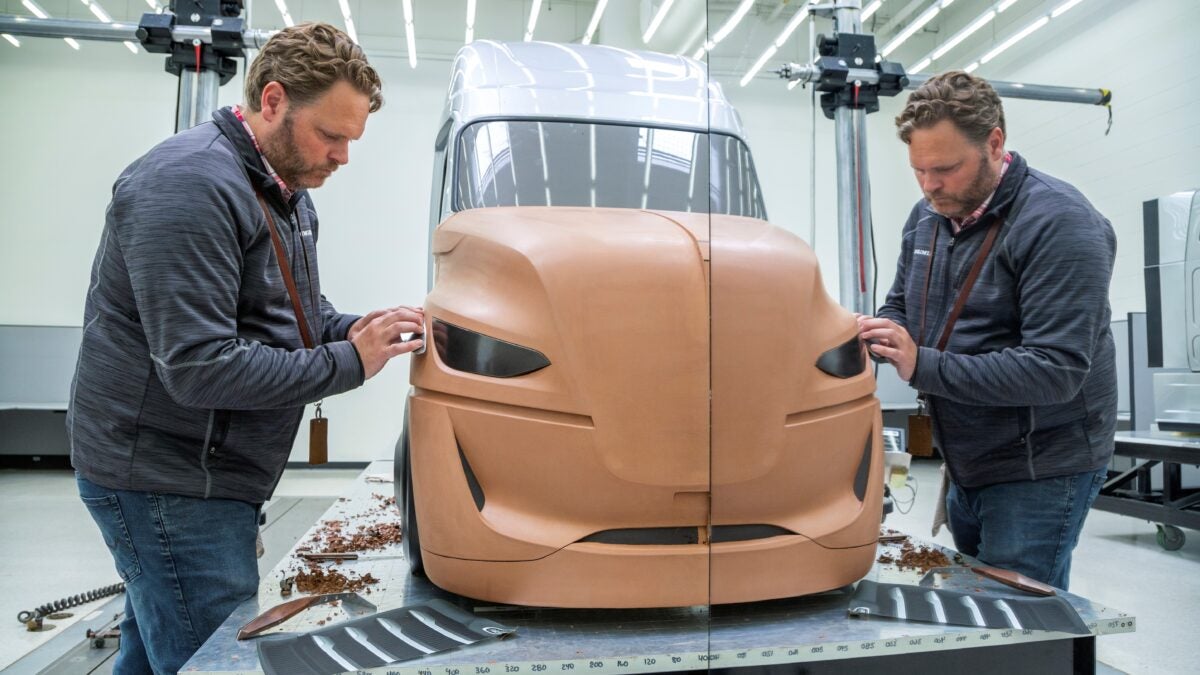
“We were inspired by the way wind can kind of blow through surfaces like snow and sand to create the perfect shape,” Cotner said. “The wind will tell you the shape it wants the form to be and we thought that was an excellent way to make the SuperTruck happen. You can actually see the efficiency in the shapes that you’re looking at.”
And what about that colorful wrap?
“The truck underneath is silver and we needed something to make it stand out,” Cotner said.
Mission accomplished.
Related articles:
SuperTruck II efficiency efforts could boost range for electric trucks
Paccar, Daimler, Volvo get bulk of $127M in SuperTruck III funding